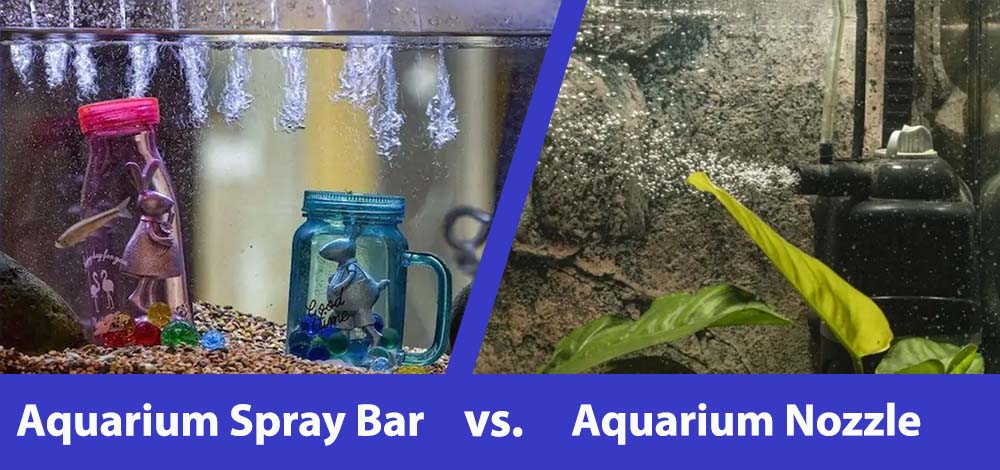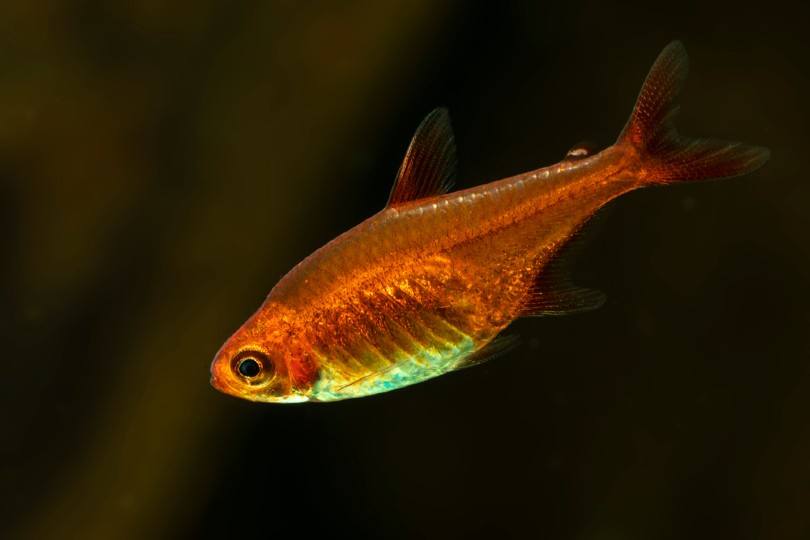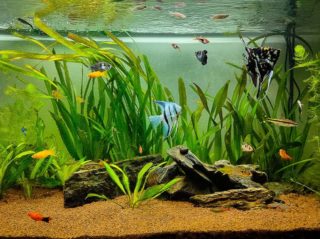9 Great Tank Mates for Red Claw Crabs: Compatibility Guide 2024

Updated on
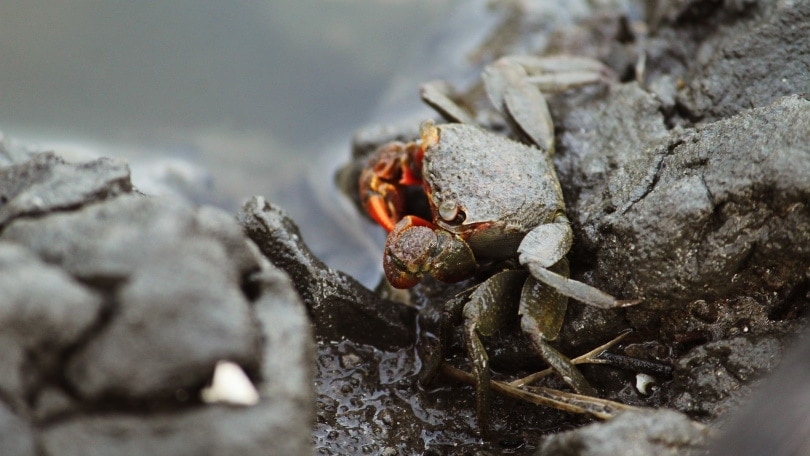
If you’ve branched out from freshwater to brackish tanks, then your options for interesting aquatic pets have changed significantly. One of the animals most commonly associated with brackish water and saltwater is crabs, and the Red Claw Crab can be a fantastic addition to your brackish tank.
It is important to carefully select tank mates for these crabs, though, because they have some aggressive tendencies that make them poor tank mates to most other animals. Let’s talk about some of your best options for tank mates for your Red Claw Crab.

The 9 Tank Mates for Red Claw Crabs
1. Red Claw Crab

| Size | 4 – 4.5 inches (10.2 – 11.4 cm) |
| Diet | Omnivore |
| Minimum tank size | 10 gallons (38 liters) |
| Care Level | Moderate |
| Temperament | Semi-aggressive, territorial |
That’s right! The very best option for a tank mate for your Red Claw Crab is other Red Claw Crabs. These aggressive, territorial crabs are often recommended to be kept in species-only tanks. On top of that, it’s ideal to only keep one male in a tank. Females typically will not squabble with each other, but males will become aggressive toward each other to compete for females and territory.
Males and females will potentially attack the opposite sex. Male Red Claw Crabs will fight to the death, so unless you have a very large tank, you shouldn’t keep multiple males together.
2. Guppy – Best for Small Tanks
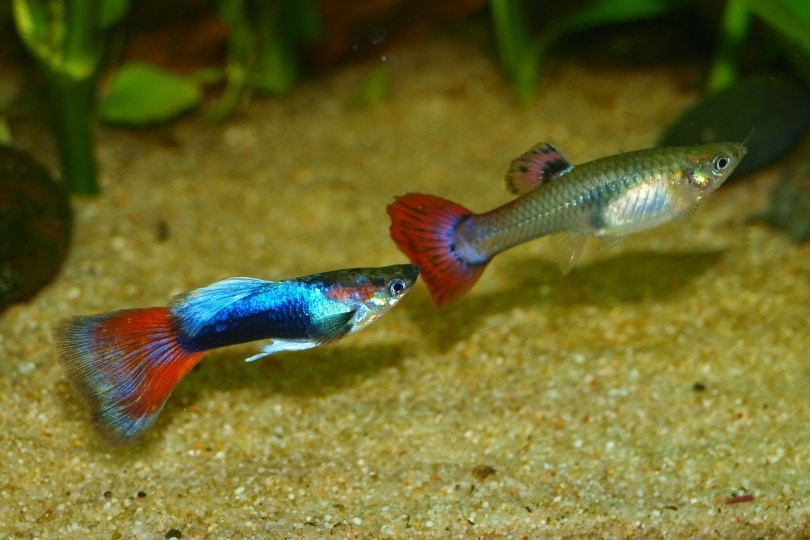
| Size | 0.5 – 2.5 inches (1.3 – 6.4 cm) |
| Diet | Omnivore |
| Minimum tank size | 5 gallons (19 liters) |
| Care Level | Easy |
| Temperament | Peaceful, social |
Guppies are small fish that are often associated with freshwater tanks, but they can thrive in brackish water as well. They spend most of their time in the upper portions of the water column, making them unlikely to become a Red Claw Crab snack. Guppies reproduce very quickly and birth multiple live fry with every pregnancy. Even if your crab does manage to snag a Guppy from time to time, you’ll still have a large population.
- Related Read: 17 Tank Mates for Guppy Fish: Compatibility Guide
3. Molly
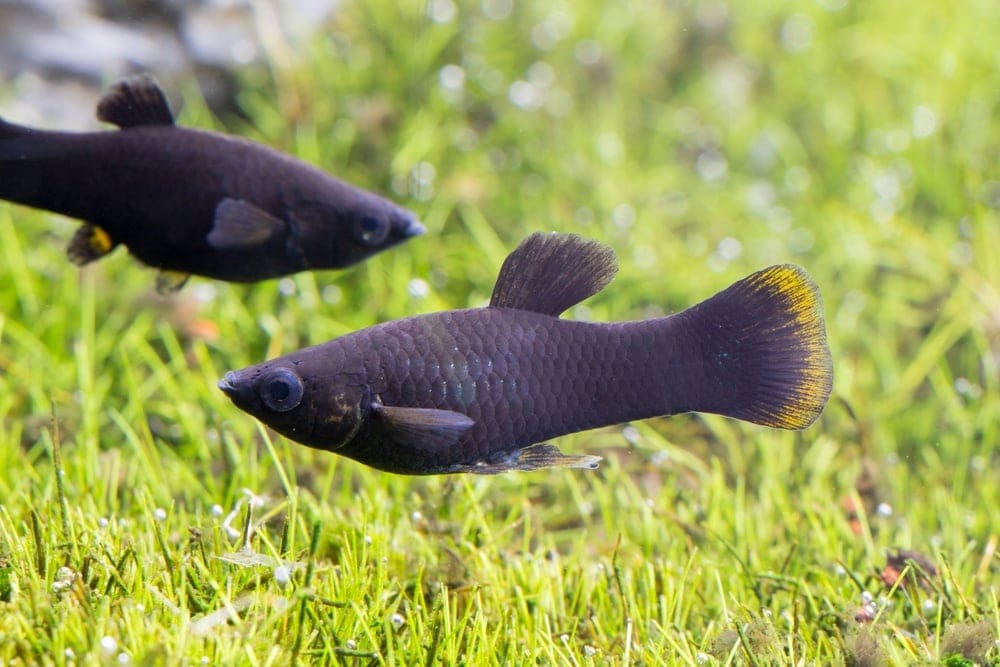
| Size | 3 – 4.5 inches (7.6 – 11.4 cm) |
| Diet | Omnivore |
| Minimum tank size | 10 gallons (38 liters) |
| Care Level | Easy |
| Temperament | Generally peaceful |
Like Guppies, Mollies are livebearers that reproduce quickly. They spend most of their time in the upper portions of the water column and tend to be very peaceful, so they’re unlikely to harass your Red Claw Crab. They are relatively large fish compared to Red Claw Crabs, so adult Mollies will often be too large for a crab to view as food. You may lose a Molly fish to your crab on occasion, though.
4. X-Ray Tetra

| Size | 1.5 – 2 inches (3.8 – 5.1 cm) |
| Diet | Omnivore |
| Minimum tank size | 10 gallons (38 liters) |
| Care Level | Easy |
| Temperament | Peaceful |
X-Ray Tetras are shoaling fish that tend to be hardier than many other types of Tetras. They are extremely peaceful fish that will easily fall prey to a crab if they enter the crab’s hunting area. However, these fish are known to spend almost all of their time in the upper portion of the water column, usually as far up as just below the surface. Where they stay in the water makes them unlikely to become crab food.
5. American Flagfish
| Size | 2 – 2.5 inches (5.1 – 6.4 cm) |
| Diet | Omnivore |
| Minimum tank size | 20 gallons (78 liters) |
| Care Level | Easy |
| Temperament | Territorial |
The American Flagfish is a hardy fish that can survive a broad range of parameters and temperatures. They do not like to be kept alone and should at least be kept in pairs. They tend to do best when kept in groups of six or more. However, when keeping larger groups, you’ll need to ensure there’s plenty of space for everyone to live peacefully.
They typically stay in the upper portion of the water column and are known for their ability to escape tanks, but they do well in tanks with a lowered water level, making them a good pick for a Red Claw Crab tank mate.
6. Banded Archerfish

| Size | 6 – 12 inches (15.2 – 30.1 cm) |
| Diet | Omnivore |
| Minimum tank size | 55 gallons (208 liters) |
| Care Level | Advanced |
| Temperament | Semi-aggressive |
The Banded Archerfish is known for its unique hunting style of shooting water at its prey to stun it. They prefer to eat live insects and will spend almost all of their time just below the surface of the water looking for something to eat. These are large fish that need a large tank to feel safe and comfortable. They may eat smaller fish, so avoid putting them in a tank with Guppies or Tetras. Their size and tank location preference makes them very unlikely to be bothered by your crab.
7. Golden Topminnow
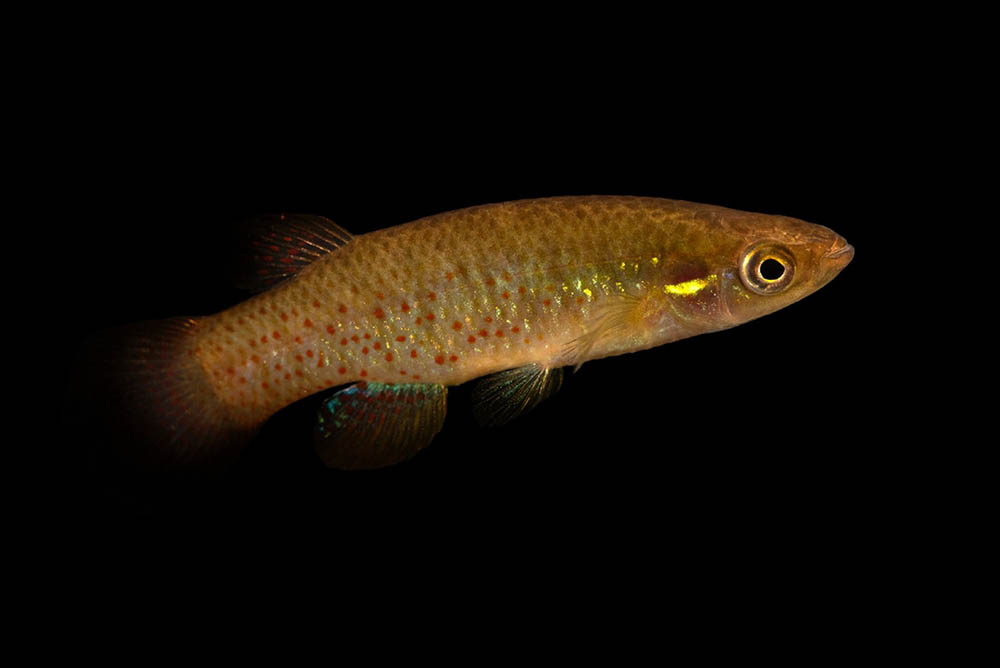
| Size | 1.5 – 3 inches (3.8 – 7.6 cm) |
| Diet | Omnivore |
| Minimum tank size | 10 gallons (38 liters) |
| Care Level | Easy |
| Temperament | Generally peaceful |
Golden Topminnows are a hardy species of fish native to the Southeastern US. They are small fish that feed on insects on the surface of the water. They are generally peaceful and, although often small enough to be eaten by a Red Claw Crab, they spend most of their time in the upper and middle parts of the water column. These flashy fish make interesting additions to a brackish tank.
8. Dragon Goby
| Size | 12 – 24 inches (30.1 – 61 cm) |
| Diet | Omnivore |
| Minimum tank size | 50 gallons (189 liters) |
| Care Level | Moderate |
| Temperament | Peaceful, may become territorial |
Dragon Gobies are often labeled as aggressive fish, but these large fish are generally peaceful. They may become territorial as they age, but this behavior is almost always limited to territorial behaviors toward other Dragon Gobies. They prefer to be kept as the solitary Dragon Goby in a tank. Although very large, these fish have small throats and generally eat small insects, like bloodworms and tubifex worms, and plant matter.
They are very unlikely to bother your Red Claw Crab and are far too large to be eaten by a crab. A 50-gallon tank is the minimum tank size for a Dragon Goby living alone. If you plan to keep a Dragon Goby and Red Claw Crab together, be prepared to care for a large tank.
- Related Read: 5 Best Tank Mates for Dragon Fish Goby
9. Silver Moony
| Size | 4.5 – 10.5 inches (11.4 – 26.7 cm) |
| Diet | Omnivore |
| Minimum tank size | 120 gallons (454 liters) |
| Care Level | Advanced |
| Temperament | Outgoing, peaceful |
Silver Moony fish are sometimes also called Sea Angels and Silver Batfish. They are peaceful, curious fish that do best in groups of at least five fish. The more you keep, the happier they’re likely to be. They have a broad size range but be prepared for them to get quite large. They need a very large tank for a school. They are omnivorous fish that are known to eat detritus, so it is possible they’ll enter your crab’s territory. Their size means they are unlikely to be eaten by a crab, though.
What Makes a Good Tank Mate for Red Claw Crabs?
The ideal tank mate for Red Claw Crabs is no tank mates at all since these aggressive crabs can have unpredictable behavior. If you choose to keep tank mates with your crab, there are a few qualities that make some fish a good match.
Fast fish that spend most of their time in the upper portions of the water column are the least likely to be caught by a crab. Non-aggressive fish that are too large to be bothered by the crab can also make good tank mates.
Where Do Red Claw Crabs Prefer to Live in the Aquarium?
Red Claw Crabs are partially terrestrial, so they require access to land in their tank. They will spend some of their time on land and the rest of the time on the bottom of the tank scavenging for food. They are very poor swimmers, so you’ll very rarely see these crabs anywhere in the water column outside of the very bottom of the tank.
Water Parameters
These crabs are native to the Indo-Pacific Ocean area. They are typically found in mangrove swamps with gentle currents. They require access to dry land, making mangroves an ideal environment for them. They need warm water between 72–82°F (22–28°C), with their ideal temperature being around 75°F (24°C). They prefer a slightly alkaline pH between 7.5–8.5. Red Claw Crabs require hard water with a salinity reading of 1.005.
Size
Red Claw Crabs can reach between 4–4.5 inches (10.2–11.4 cm), but this measurement includes their leg span. Their carapace, or the hard shell of the body, usually measures between 2–2.5 inches (5.1–6.4 cm).
Aggressive Behaviors
These crabs are extremely territorial, with males being the worst culprits, especially in the presence of other males. Males will fight each other to the death. On occasion, this aggressive behavior occurs between females or males and females. To prevent aggression, the ideal combination of crabs is two females and one male.
Outside of being aggressive, Red Claw Crabs are omnivores that appreciate live prey. This means they will hunt and catch smaller tank mates, including fish and invertebrates. They will even eat larval Red Claw Crabs, which makes successfully breeding them in an aquarium almost impossible.

Top 2 Benefits of Having Tank Mates for Red Claw Crabs in Your Aquarium
1. Draw Attention
As fun as Red Claw Crabs can be to watch, they will also hide for extended periods. Adding tank mates can help bring more life and activity to your tank.
2. Clean Up
Crabs will eat food and plant matter that make it to the bottom of the tank. However, they won’t usually catch things that stay suspended up further in the water column. Adding upper water column tank mates will help ensure floating food particles also get eaten.

Final Thoughts
When it comes down to it, most Red Claw Crabs are happiest in their own environment. Some tank mates can work, though. It takes dedication on your part to ensure everyone in the tank has their own safe spaces and that everyone gets plenty to eat. Keeping your crab well fed will reduce the chances of it going after tank mates.
Peaceful, large tank mates and tank mates that rarely leave the upper water column are the ideal tank mates for Red Claw Crabs, aside from other Red Claw Crabs. If you plant to keep multiple crabs together, make sure you don’t add multiple males to your tank unless your tank is very large. A tank over 100 gallons may be able to safely house two male Red Claw Crabs. Otherwise, plan to keep a single crab or one or two females and a male crab.
See also:
Featured Image Credit: Ambady Sasi, Pixabay

